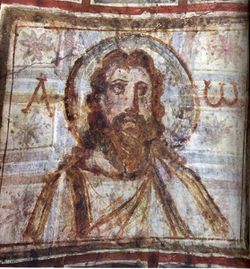Catacombs
The construction of catacombs began in the 2nd century. They were initially used for refuge during times of persecution, for the celebration of the Eucharist, for interment of the dead, and for memorial services. By the 5th century, they were no longer used for burial, but exclusively for religious services commemorating the death of a martyr. By the 9th century, catacombs completely fell into disuse and were forgotten until their rediscovery in 1578.

The inscriptions, symbols, and paintings on the walls, arches, and sarcophagi in the catacombs provide a rich source of information about Early Christian art and prayer, and include Christ depicted as the Good Shepherd and New Testament miracles. Small lamps used for lighting the passages and burial sites in the catacombs were decorated with Christian symbols such as the cross, the dove, the Chi-Rho symbol [1], the fish, and loaves. Prayers for the departed, for the newly baptized, and for courage and perseverance under trial appear frequently.
After 313 AD, when Roman persecution of Christians ended with the establishment of Christianity as an official religion, the practice of subterranean burial gradually declined in favour of using above ground cemeteries in and around church buildings, and many of the relics of martyrs were transferred to churches and basilicas.
